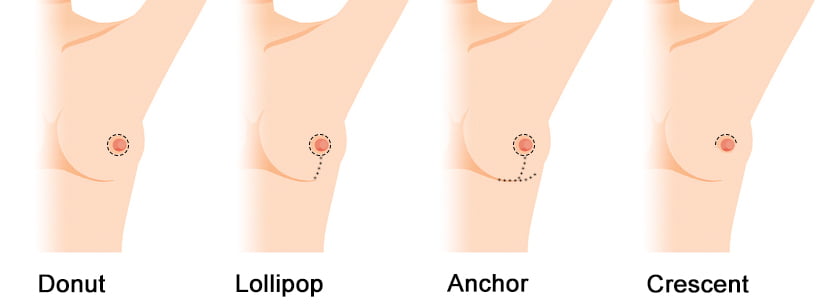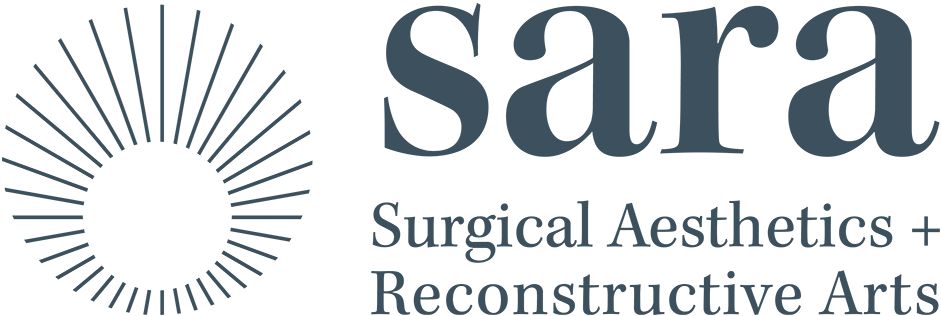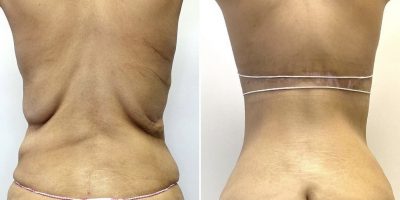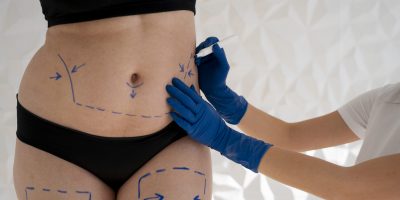At Sara Surgery, we understand the desire to look and feel your best, and we’re here to help you actualize your ideal self with breast lifts and reductions. These procedures can dramatically enhance your appearance and boost your confidence, but it’s essential to understand the potential for scarring and how to minimize it post-surgery. Here’s a guide to the types of scarring you might encounter and the best practices for scar mitigation.
Types of Incisions for Breast Lifts and Reductions
When considering a breast lift or reduction, it’s important to be aware of the different types of scarring that may occur depending on the incision type.

Types of Scarring with Breast Lifts and Reduction
- Periareolar Scar: This type of scar is placed around the edge of the areola. It is common in both breast lifts and reductions where the incision is made to reshape and reduce the size of the areola and nipple.
- Vertical Scar: Often called a “lollipop” scar, this vertical scar runs from the bottom edge of the areola scar down to the lower breast crease. It is common in breast lifts and certain reduction techniques that require reshaping the breast tissue.
- Crescent Scar: This short-scar technique is used when only a minimal lift is needed for the nipple and no re-shaping of the areola is needed.
- Inframammary Scar: Located along the crease under the breast, this scar is typically used in breast augmentations to insert implants and can be well-hidden by the natural fold of the breast.
- Anchor Scar: This type of scar combines the periareolar, vertical, and inframammary incisions and is often used in more extensive breast lift and reduction procedures. It resembles an anchor shape and provides significant reshaping capabilities.
How to Minimize Scarring Post-Surgery
Although some degree of scarring is inevitable, there are several effective strategies to minimize their appearance:
- Follow Post-Operative Instructions: Adhering to your surgeon’s post-operative care instructions is crucial. This includes wearing recommended garments or bras, avoiding strenuous activities, and attending follow-up appointments.
- Use Scar Creams and Silicone Sheets: Specialized scar creams and silicone sheets can promote healing and reduce the visibility of scars. These products keep the scar moisturized and protect it from environmental factors that can worsen its appearance.
- Stay Hydrated and Eat a Healthy Diet: Proper hydration and a balanced diet rich in vitamins and minerals, particularly vitamins C and E, can support the healing process and improve skin quality.
- Avoid Sun Exposure: Protect your scars from the sun, as UV exposure can darken scars and make them more noticeable. Use sunscreen or cover the scarred area with clothing when going outside.
- Massage the Scar: Gently massaging the scar tissue can break down collagen build-up and improve the scar’s texture and flexibility. Consult with your surgeon on when and how to start this practice.
- Quit Smoking: Smoking can impair wound healing and worsen scarring. If you smoke, quitting before and after surgery can greatly benefit your overall healing process.
Choose Sara Surgery for your Breast Lift Procedure
At Sara Surgery, located in the heart of the Chicago suburbs, our goal is to help you achieve your ideal self with minimal scarring and optimal results. Dr. Sara R. Dickie and her expert team are dedicated to providing personalized care and advanced surgical techniques to ensure the best possible outcomes.
If you’re considering a breast lift or reduction in the Chicago area, schedule a consultation with us at Sara Surgery. We’ll guide you through the process, discuss your goals, and create a customized treatment plan to help you achieve your ideal look with minimized scarring.







